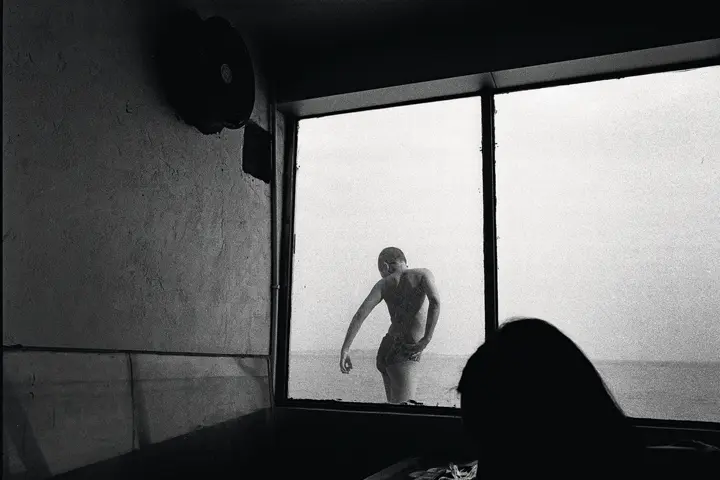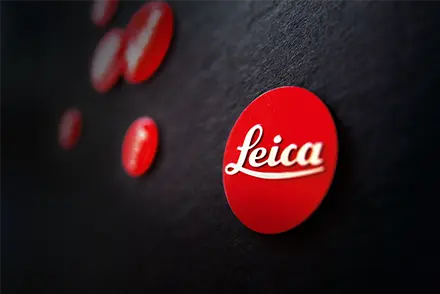
On 23 May 2014, Leica Camera AG will be celebrating the official opening of the new company headquarters in the Leitz Park in Wetzlar. The Leica Galerie in the Leitz Park will also be opened in the course of the celebrations. The festivities will begin with a special exhibition for the 100th birthday of Leica photography. ‘10 x 10’ is a project that points to the future with examples of contemporary photography while simultaneously exhibiting intrinsic links with its past. Ten photographers (Dominic Nahr, Julia Baier, Evgenia Arbugaeva, Craig Semetko, Kirill Golovchenko, Amedeo M. Turello, Alec Soth, Jing Huang, Thomas Ruff and Saga Sig), each of them with ten works, will engage in a creative dialogue with one of the great masters from the history of Leica photography and take a critical look at their work in photographic terms.
In the words of Karin Rehn-Kaufmann, director general of Leica Galleries International: ‘Could there be anything more wonderful than taking a look at 100 years of Leica photography and creating something new? For the inaugural exhibition, we have set ourselves precisely this task – creating new photographic images that are invisibly linked to the past, the heritage of Leica photography. The outcome is a collection of ten top-class presentations that illustrate the enormous diversity of photography. 100 photos in all – a contemporary kaleidoscope of photography.’
Sometimes, the paired constellations are immediately obvious, as in the case of Elliott Erwitt and Craig Semetko, whose common ground can be recognised at first glance. In the case of other pairings, such as that of Henri Cartier-Bresson and Chinese photographer Jing Huang, the links are more subtle: for his project, the winner of the Oskar Barnack Newcomer Award captured images that create associations to painting and lyricism – delicate, poetic and abstract. And, precisely as in the works of the French photographer of the century, it is the small, everyday things that unfold to greatest effect in his pictures.
In her portfolio, ‘Geschwebe’ (Levitation), German photographer Julia Baier enters into a dialogue with René Burri. Forms systematically anchor themselves in her pictures in an interplay of perspectives and planes that confuse – and are intended to confuse – the viewer. Dominic Nahr and Robert Capa share the genre of reportage. Nahr’s pictures of Lake Victoria describe the high youth unemployment rate that, coupled with ecological problems, present an increasing threat to this inland lake.
In her portfolio entitled ‘Arktismagie’ (Arctic magic), Russian photographer Evgenia Arbugaeva also aims to depict reality – in a uniquely personal interpretation that raises it to another plane of perception. Her time in the magical darkness of the Arctic Circle awakened a feeling in her of having arrived in an almost unreal world. Her partner for this project is Hungarian photographer André Kertész, who captured his models as reflections in distorting mirrors to sever them from reality. Both photographers carry us away on a journey into surreal worlds.
Ukrainian photographer Kirill Golovchenko follows quite a different approach in his portfolio entitled ‘Baugrube’ (Chaos and noise). The images from his home country are bright and colourful and immediately catch the eye. They are intended to reflect the chaos that rules in the Ukraine of today and express an inner state of the soul. Lee Friedlander, his mentor, also employed mirror images in his work, and it is the aesthetic chaos in the pictures by both photographers that breaks new ground.
Alec Soth’s portfolio, ‘Winter white’, was captured in his home state of Minnesota in the USA, a region that is renowned for its hard winters and masses of snow. In it, Soth not only revisits his childhood, but also treads in the footsteps of William Eggleston, the pioneer of artistic colour photography. Just like Eggleston, he makes full use of the seemingly banal to bring to life perfect compositions with delicate colours and every shade and nuance of white.
In contrast, Italian photographer Amedeo Turello has dedicated himself to the world of fashion photography and, just like William Klein, whose work stands as his inspiration here, is not exclusively a studio photographer. Italian sunlight, beautiful women and the world of glamour – his pictures capture it all, bring it to Wetzlar and thus reveal another fascinating facet of Leica photography.
Thomas Ruff has dedicated himself to the work of Alexander Rodchenko. In his portfolio of nature studies and abstracts, entitled ‘Positive/Negative’, he focuses his attention on the shadows and interpretations of the photographic negative. Ruff experiments with the construction of two ways of seeing his subjects. He employs the sepia setting of his Leica M Monochrom as his ‘positive’ and the tonal inversion of this as his ‘negative’. The outcome is a duality of tonalities with extreme aesthetic contrasts. The photographic image itself – says Ruff – becomes the object of contemplation, while the photographed subject disappears.
With her cycle of images, in which nature, structures and shapes are a central theme, Saga Sig created an homage to Jeanloup Sieff and his mastery of light. For this project, the Icelandic photographer investigated several approaches, as at a fashion shoot, but with many personal components: The familiar landscapes of her home country, captured at her favourite spots in Iceland, delivered natural and projected backgrounds. Located somewhere between the disco-glamour of the seventies mystic, fairytale worlds and BDSM fantasies, Sig constructs a beguiling shadow show that carries the viewer into a surreal world – sometimes in colour, sometimes black and white, but always with expressively poetic nuances.
All the photographs exhibited are reproduced as fine art prints on specially coated art papers from Hahnemühle. With a diversity of finishes from matt to gloss and smooth to textured, the picture carriers are as different as the pictures themselves and highlight the unique aura of each and every subject.
The ‘10 x 10’ exhibition in the Leica Galerie Wetzlar in the Leitz Park will run until September 2014. The Galerie is open to visitors between 8 a.m. and 6 p.m. from Monday to Friday and from 9 a.m. to 12 p.m. on Saturdays. Admission is free.

Leica Camera – A Partner for Photography
Leica Camera AG is an international, premium manufacturer of cameras and sports optics. The legendary reputation of the Leica brand is based on a long tradition of excellent quality, German craftsmanship and German industrial design, combined with innovative technologies. An integral part of the brand's culture is the diversity of activities the company undertakes for the advancement of photography. In addition to the Leica Galleries and Leica Akademies spread around the world, there are the Leica Hall of Fame Award and, in particular, the Leica Oskar Barnack Award (LOBA), which is considered one of the most innovative sponsorship awards existing today. Furthermore, Leica Camera AG, with its headquarters in Wetzlar, Hesse, and a second production site in Vila Nova de Famalicão, Portugal, has a worldwide network of its own national organisations and Leica Retail Stores.